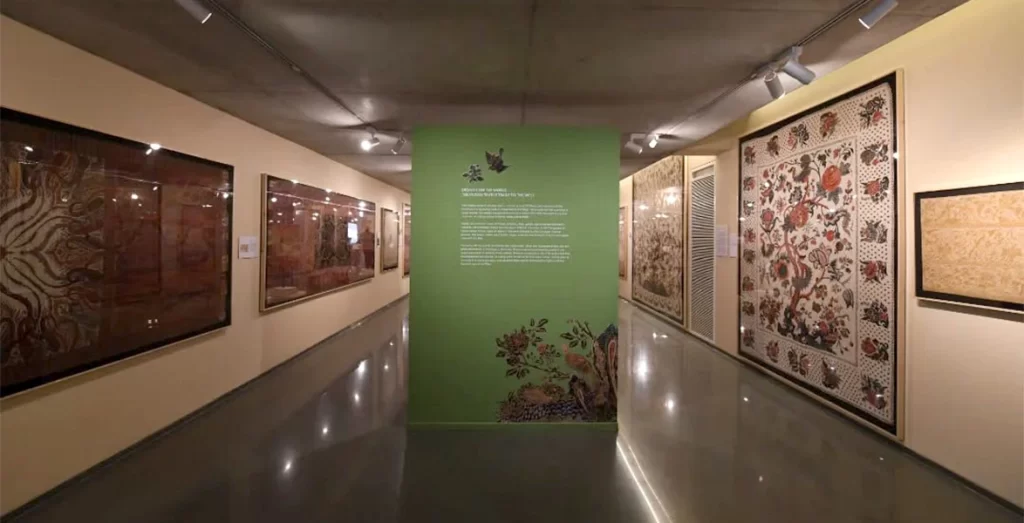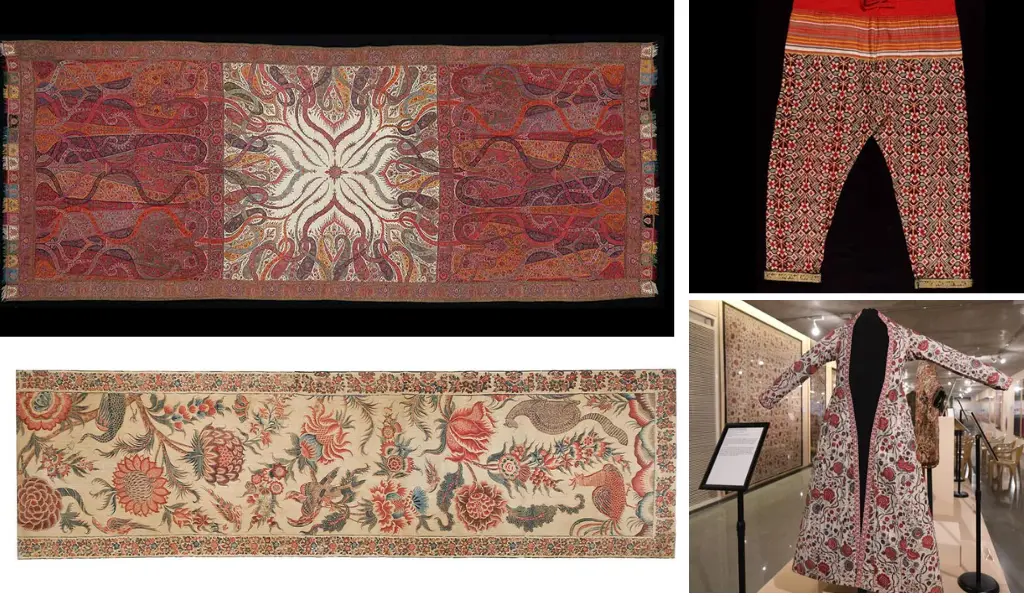The TAPI collection, housed in Ahmedabad, Gujarat, offers an intimate look into India’s vibrant past. TAPI, which stands for Textiles and Art of the People of India, is more than an archive—it’s a treasure trove of creativity and history.
For lovers of art, textiles, and history, this collection is a testament to India’s evolution as an aesthetic conglomerate.
You May Also Like: Does ‘Skintertainment’ Still Sell?

What Is the TAPI Collection?
The TAPI collection was established to preserve the artistic legacy of India. With over 15,000 pieces, it spans centuries of textile and art traditions. The collection includes:
- Handwoven fabrics.
- Historic textiles.
- Intricately designed embroideries.
- Paintings, manuscripts, and jewelry.
These artifacts not only represent India’s artistic wealth but also its cultural narrative.
The Role of Ahmedabad in Art Preservation
Ahmedabad, known as the Manchester of India, has long been a hub for textiles. It is the perfect home for the TAPI collection, as it reflects the city’s rich connection to the art of weaving and dyeing.
The city is also home to institutions like:
- Calico Museum of Textiles – Renowned for its textile exhibits.
- National Institute of Design (NID) – Known for its contribution to design and craft innovation.
Together, these landmarks position Ahmedabad as a leading force in preserving and showcasing India’s textile heritage.
Highlights of the TAPI Collection
1. Historic Textiles
The collection boasts rare fabrics that date back to the 15th century. These include:
- Chintz: Hand-painted and block-printed cotton fabrics once exported to Europe.
- Muslin: Known for its fine weave, particularly from Bengal.
- Ikat: A complex dyeing technique featuring geometric patterns.
2. Embroideries
The embroidery section showcases the craftsmanship of regions like Gujarat, Rajasthan, and Bengal. Highlights include:
- Mirrorwork from Kutch.
- Kantha embroidery from Bengal, made from recycled fabrics.
- Zardozi, the royal metallic thread embroidery.
3. Paintings and Manuscripts
Beyond textiles, TAPI offers rare insights into Indian art forms:
- Miniature paintings depicting mythology, court scenes, and daily life.
- Illustrated manuscripts such as the Ramayana and Mahabharata.
4. Jewelry and Adornments
India’s history with jewelry design is rich and diverse. The TAPI collection includes antique ornaments, showcasing regional craftsmanship and symbolism.
India as an Aesthetic Conglomerate
India’s past is a tapestry of diverse influences. From the Mughal Empire to European traders, its textiles and art have been shaped by global interactions. The TAPI collection captures this essence, offering a panoramic view of:
- Cultural Fusion: The blending of Persian, Indian, and European design elements.
- Symbolism in Art: How every piece—from fabrics to paintings—tells a story.
- Innovation in Craftsmanship: Techniques like block printing and natural dyeing still inspire modern artisans.
Our Experience at TAPI
Visiting the TAPI collection is like stepping into a time capsule. The curators have meticulously arranged artifacts to transport visitors through centuries.
1. Interactive Exhibits
Some exhibits allow visitors to touch fabric replicas, offering a tactile experience of ancient textiles.
2. Guided Tours
Expert guides explain the origins, techniques, and cultural significance of the pieces on display.
3. Workshops
TAPI hosts workshops that teach traditional art forms, like block printing and embroidery, keeping the legacy alive.
5-Day Itinerary for Art Enthusiasts in Ahmedabad
Day 1: Arrival and Cultural Immersion
- Visit Sarkhej Roza and Adalaj Stepwell to understand Ahmedabad’s architectural beauty.
- Enjoy traditional Gujarati cuisine at local restaurants.
Day 2: TAPI Collection Exploration
- Spend the day at the TAPI collection.
- Attend a workshop on textile preservation or block printing.
Day 3: Calico Museum of Textiles
- Dive deeper into textile heritage.
- Shop for handloom products at local markets.
Day 4: Design and Innovation
- Explore the National Institute of Design (NID).
- Visit galleries like Archer Art Gallery.
Day 5: Art and Retail Therapy
- Shop for souvenirs at Law Garden Night Market.
- Wrap up your trip with a visit to the Sabarmati Ashram.
Costs of Visiting the TAPI Collection
Entry to the TAPI collection may require prior appointments. Here’s an estimated cost breakdown:
- Entry Fee: $5–$10 (if applicable).
- Guided Tours: $15–$20 per person.
- Workshops: $25–$50, depending on the activity.
- Souvenirs: Prices vary based on items like textiles or replicas.
Accommodation in Ahmedabad ranges from budget-friendly options at $20 per night to luxury stays at $100+.
Travel Tips for Ahmedabad
- Best Time to Visit: November to February, when the weather is pleasant.
- Local Transport: Use auto-rickshaws or book app-based cabs for convenience.
- Cultural Etiquette: Dress modestly, especially when visiting historical sites or temples.
- Stay Hydrated: Carry water bottles, especially during warmer months.
Why the TAPI Collection Matters Today
The TAPI collection is more than just a display of artifacts. It serves as:
- An Educational Resource: Inspiring students and researchers in the fields of art, design, and history.
- A Cultural Bridge: Connecting younger generations with their heritage.
- A Global Showcase: Promoting Indian aesthetics on an international stage.
Future of the TAPI Collection
As digital technology advances, the TAPI collection is exploring ways to reach global audiences through:
- Virtual Tours: Making the collection accessible to art lovers worldwide.
- Collaborations: Partnering with museums and institutions to expand its influence.
Final Thoughts
The TAPI collection in Ahmedabad is a gateway to understanding India’s past as an aesthetic powerhouse. It captures the essence of a nation whose artistry transcends time and geography. Whether you’re an art enthusiast or a casual traveler, a visit to this collection is an enriching experience.
Unravel the threads of history and let the TAPI collection weave its magic on you.











[…] You May Also Like: Past Continuous with TAPI in Ahmedabad […]